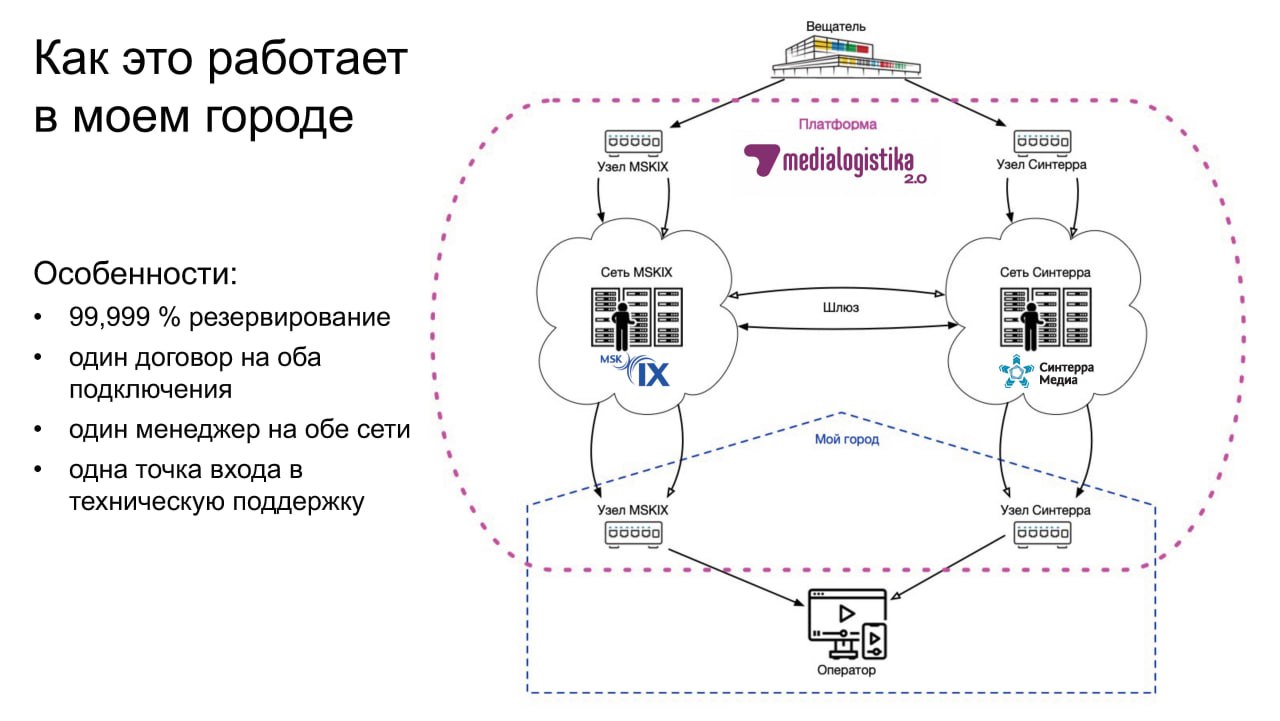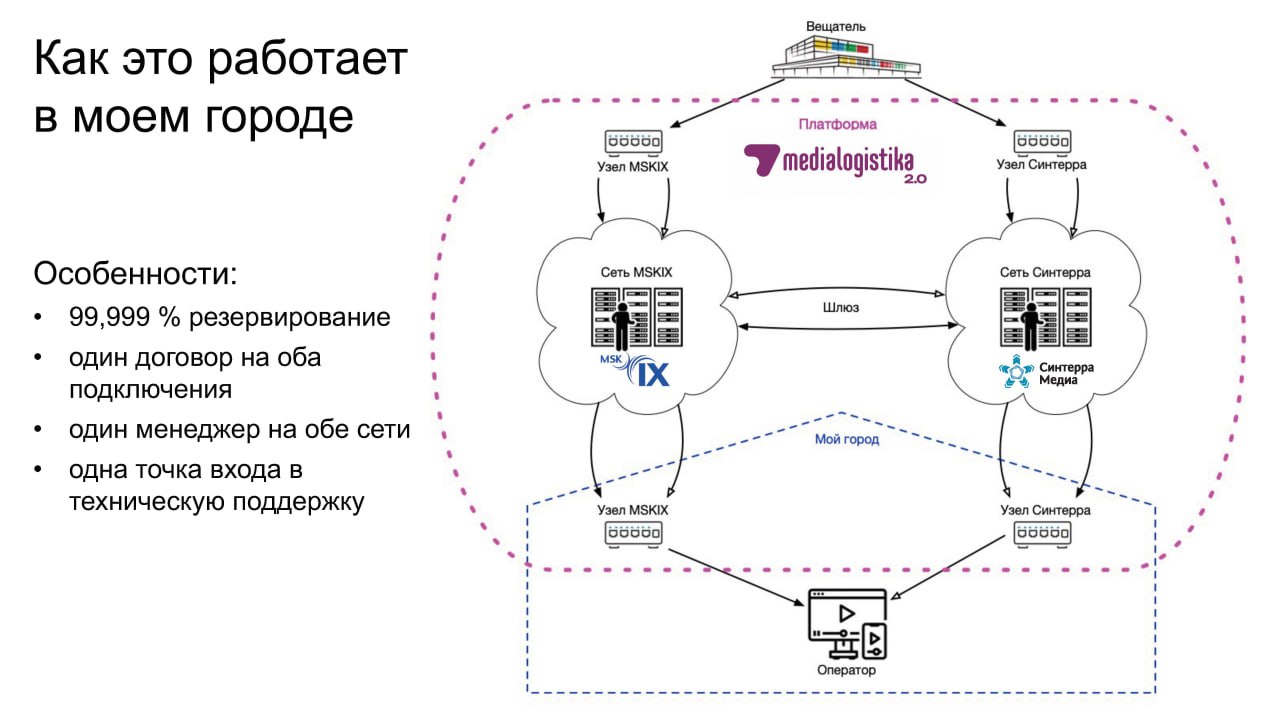Medialogistika 2.0: Maximum redundancy of TV service

The TTC & Sibeer-IX ‘24 telecom conference took place in Altai on March 11-14. The event was organized by Effort Telecom, which brought together representatives from over 100 telecom and media companies at Ski Resort Manzherok. The conference program included industrial reports and themed discussions featuring the market’s leading experts as well as diverse activities for effective networking.
Medialogistika 2.0 Project Director Grigory Kuzin presented the report “Medialogistika in My City,” on how the distribution of television signals works over two independent networks through two operators.
Medialostika 2.0 is a joint project between MSK-IX and Synterra Media, which combined their efforts, thus making it possible to expand the geography of the platform’s presence to cities with a population of 100,000+ in various Russian regions and resulting in positive changes in how regional cable TV operators work.
MSK-IX and Synterra Media operate as equal partners in this project, and did not combine their networks into one, which made it possible to organize the operator’s connection through two networks simultaneously, thus ensuring full backup.
Grigory Kuzin gave the example of the Yekaterinburg operator UMMC-Telecom, which has been connected to the MSK-IX internet exchange point for several years. But after this project was launched, an additional connection was completed in the Synterra Media node. That is, the operator within one city is connected to two independent networks at once, through which he simultaneously receives the same package of television channels.
The networks are connected to each other through a gateway at the core level, where the television channels received from broadcasters are aggregated. This is done to ensure full redundancy. If the operator receives some channels only from the MSK-IX network, and some from Synterra Media, in the event of an emergency on one of the networks, the distribution of all channels will continue seamlessly and unnoticed by the operator through the second network.
“We can provide the same numbering of multicast groups within two different networks. Thus, completely identical TV channels are distributed along completely separate routes. But we specially assign different backup numbering for operators for whom reservation with identical numbering is inconvenient,” Grigory Kuzin explained.
Of course, operators can always choose to use satellite or a third-party network ground delivery operator for backup. However, they must understand that they will be paying for two full services for television channel distribution. Connection to the two networks within the Medialogistika 2.0 platform is carried out at special rates in which the second network is considered a backup network by default, and delivery via this system will cost about three times less.
“It is important to note that both networks, MSK-IX and Synterra Media, also have internal backup. Therefore, when the operator is connected to the two networks at once, service availability is almost 100 percent guaranteed. I recommend using the opportunity not just to receive television channels, but to receive them with maximum redundancy,” Grigory Kuzin concluded.




